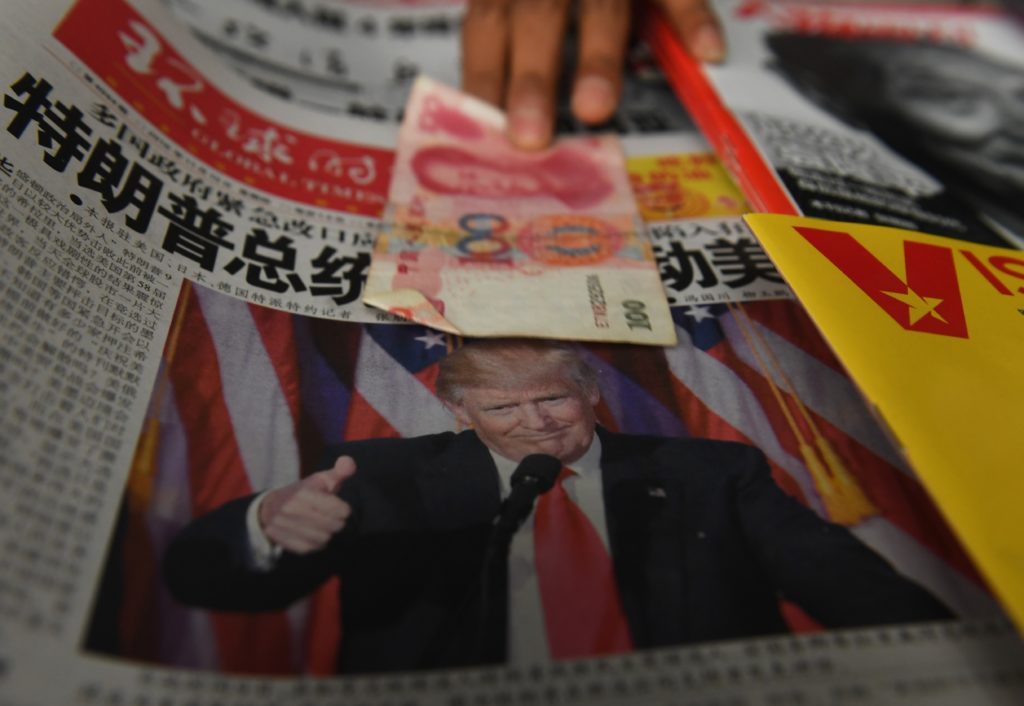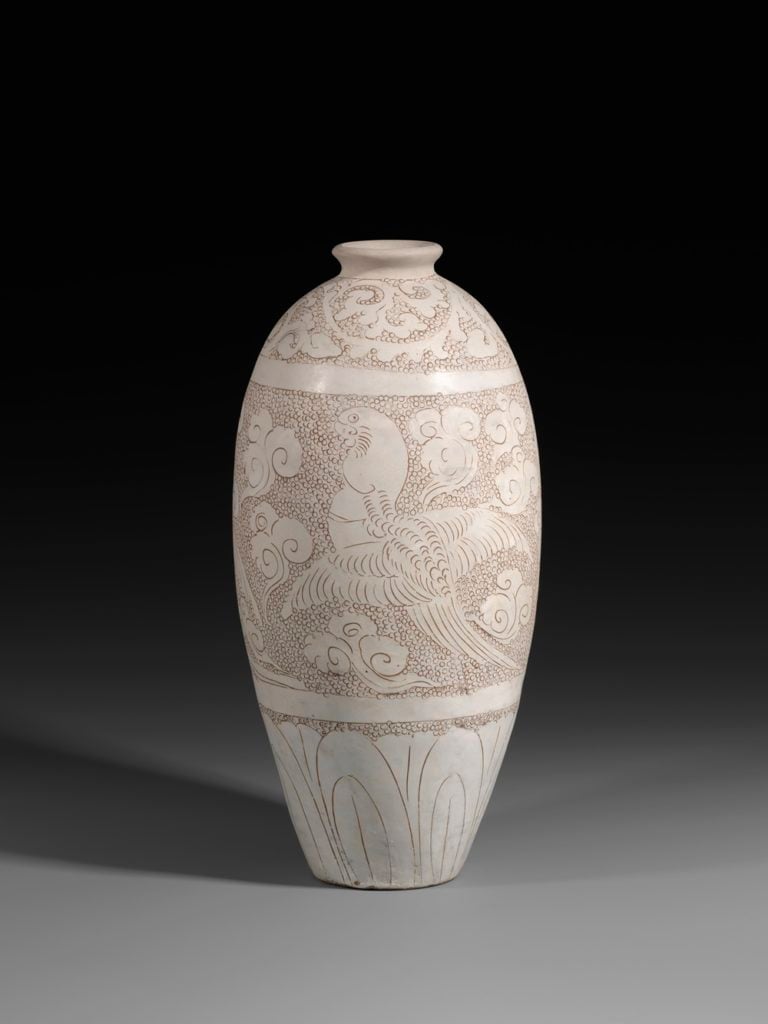Law & Politics
A New ‘Trade-War Tax’ on Chinese Art Has US Dealers Up in Arms
The new tariff would add a 25 percent cost to Chinese art coming into the US.

The new tariff would add a 25 percent cost to Chinese art coming into the US.

Eileen Kinsella

“Stupid,” counterproductive,” “senseless,” and “detrimental.”
These are a few of the descriptors being thrown around by art dealers and experts in response to the Trump administration’s decision to add art and antiques to the lengthy list of Chinese products it plans to hit with a 25 percent import tariff. The new tax—on art and hundreds of other products— could become effective as soon as August 23.
A few days ago, US trade representative Robert Lighthizer added categories covering paintings, sculpture, collage, ceramics, and antiques (objects more than 100 years old) to a list of targeted products with a total value of about $200 billion. Lighthizer did so at the request of President Trump as part of an ongoing effort to fight back against what administration officials say are China’s unfair trade practices.
US dealers who specialize in Chinese art and antiques are alarmed by the news, saying it would be extremely harmful to their bottom line to add an additional 25 percent to the existing cost of bringing works into the US for exhibitions or sale.
Museum directors whose institutions have large Chinese art holdings are similarly concerned about the effect it would have on their ability to add to their collections. Other legal experts have weighed in saying that not only is the tariff counterproductive because China already has many import/export restrictions in place, but that it further runs counter to the spirit and goals at the heart of cultural exchange.
According to the recently released “Global Chinese Art Auction Market Report,” a collaboration between artnet and the China Association of Auctioneers, global auction sales of Chinese art and antiques totaled $7.1 billion in 2017, a seven percent increase from the previous year. Sales in North America accounted for just $408 million, or six percent, of the total. That already small fraction is likely to be hit even harder by the proposed US tariffs.

A large engraved white-glazed Cizhou Meiping. Northern Song Dynasty, (A.D. 11th Century). Courtesy of J. J. Lally & Co., New York. Photo by Oren Eckhaus.
“China will welcome this,” said New York-based art dealer James J. Lally, president of J.J. Lally, which specializes in Chinese art and antiques. “This is staged as a punitive attempt by the Trump administration, but in fact it would only support the longstanding Chinese government efforts to monopolize the trade in Chinese art and antiques. It’s a very harmful levee which would isolate the United States as one place where it is 25 percent more expensive to bring in anything.”
As currently proposed, the tariff is sweeping. It covers “all Chinese art coming from anywhere in the world. It is not simply a tariff against Chinese art shipped from mainland China,” says Lally. Thus, objects that left China decades ago and are now coming into the US—say via Europe—still trigger the 25 percent fee.
“It’s silly to impose a tariff on something that’s ancient or old. It has no effect on the current economy,” says Kate Fitz Gibbon, an attorney and executive director of the nonprofit Committee for Cultural Policy, in New Mexico. “You don’t manufacture or grow or produce antiquities or antiques.”
Fitz Gibbon points out that China recently negotiated the renewal of a 2009 Memorandum of Understanding with the US that prevents its importation of pre-Tang Dynasty objects as well as “wall decoration and monumental sculpture more than 250 years old.” Her organization has weighed in on these and other matters with research papers posted on the Cultural Property News website that cite arguments against the US granting China’s requests.
Chambers Fine Art, which specializes in contemporary Chinese art and operates branches in New York and Beijing, is also one of numerous US dealers dismayed by the prospect of the tax. It is planning a major show of works by Chinese artist Shang Yang in September. “It’s very straightforward in terms of how it would affect us,” director Daniel Chen told artnet News. “We import works of art several times a year to exhibit, to sell, and to showcase. If there is a 25 percent tariff on that, it would make our lives extremely difficult. Nearly all of the artists Chambers shows are Chinese, and the majority of them live and work inside China.
“We’re an American company and the largest portion of our client base is in the US, so this negatively affects people in this country,” says Chen. “It doesn’t make sense.”
Experts are eagerly awaiting the chance to weigh in on the tariff when a formal procedure takes place on August 20-23. According to Lighthizer, a future notice “will announce a process by which interested persons may request the exclusion of particular products covered by a tariff line subject to the additional duties.”
Peter Tompa, executive director of the Global Heritage Alliance, an advocacy group based in Washington, D.C., wrote a memo on behalf of his organization and the Committee for Cultural Policy on August 6. The tariffs “will further damage the ability of the small businesses of the art and antiquities trade to import Chinese art from third countries, as well as make it even more difficult for collectors and museums to acquire such art,” the statement said.
The Art Dealers Association of America (ADAA) also weighed in on the matter, saying: “Art dealers in the United States are small and mid-sized businesses that operate within the global art market. There are many dealers that specialize in Chinese art, and many more who work with living Chinese artists. Therefore, the imposition of tariffs on art and antiquities from China will have a detrimental impact on many art dealers, museums, and private collectors in the United States. With the proposed tariffs in place, it would be impossible for these businesses to price artwork competitively within the global art market. The imposition of these tariffs would unnecessarily harm the commercial sector and will negatively impact many small businesses. The tariffs would also stifle the greater cultural exchange that galleries foster.”
And it’s not just entities with commercial interests in the art market who are concerned. “It’s overall not good and not helpful,” said Kimerly Rorschach, director of the Seattle Art Museum, which also oversees the city’s Asian Art Museum. “It makes work more expensive, it constrains the market and thus constrains us in bringing these works to our audiences and educating and promoting the cultural exchange that is the museum’s mission.”
The Association of Art Museum Directors is also a vocal opponent of the tariff. Executive director Christine Anagnos told artnet News in an email that the group “is concerned that this proposed tariff will reduce the ability of American museums to acquire new works of art that are central to the mission of art museums. Like many in the museum field we will be submitting comments on the implications of the proposed tariffs.”
“It would be a shame to do this,” says Chen of Chambers Fine Arts. The mission of the gallery is to “promote the artists and give them an international platform. I really don’t see what it has to do with trade.”